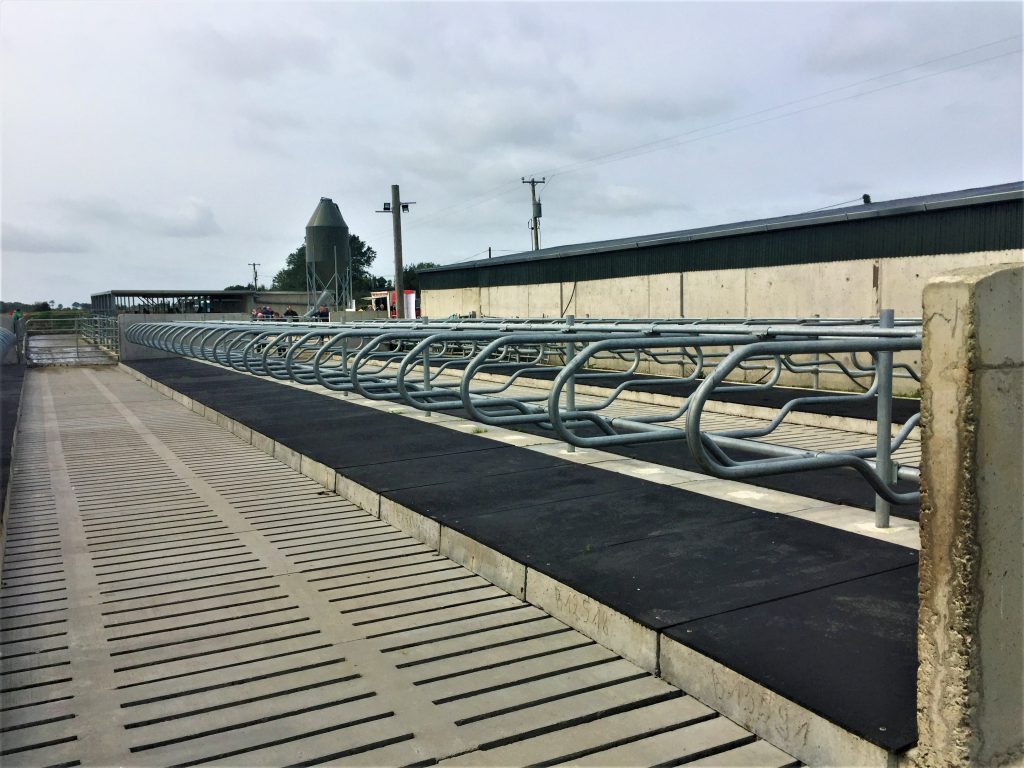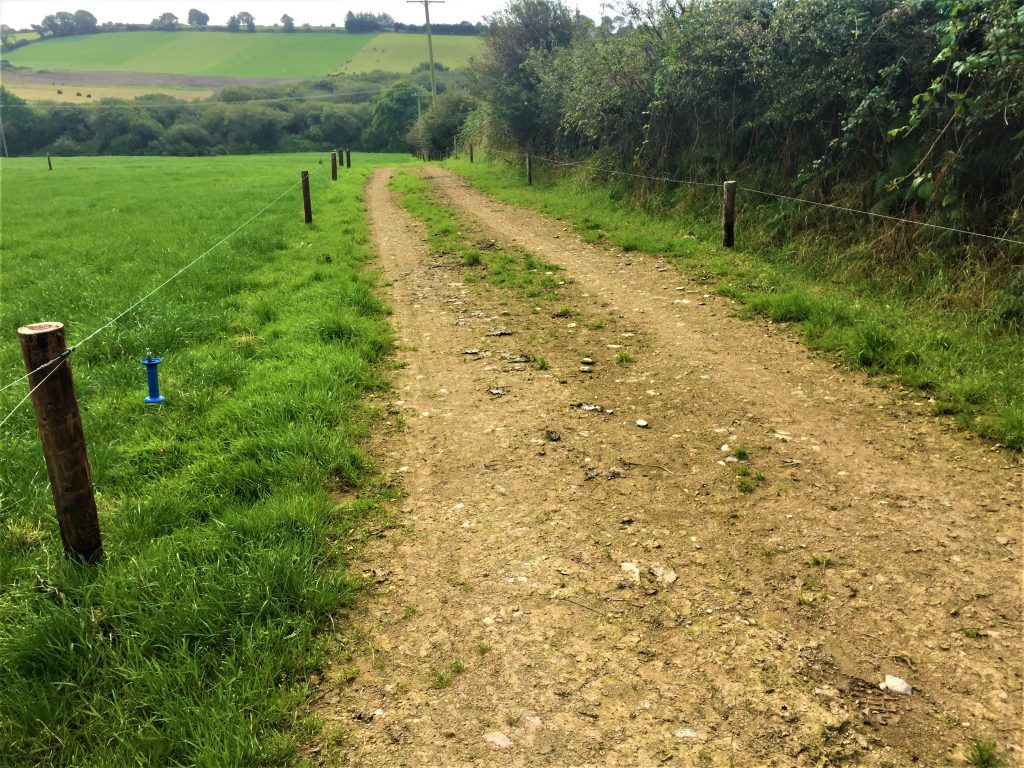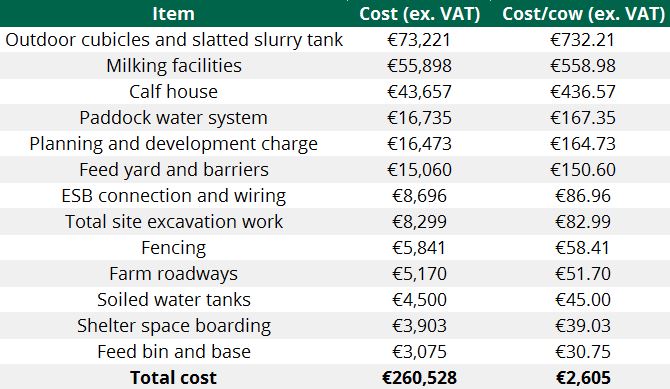Back in 2015, Teagasc in conjunction with the owners of Shinagh Estates – Drinagh, Bandon, Barryroe and Lisavaird co-ops – converted the 34ha Gurteen Farm into a new dairy demonstration farm.
The objective was to demonstrate the setup, operation and financial performance of a dairy share farming arrangement.
Prior to the conversion, Gurteen farm had been used to rear replacement heifers for Shinagh Dairy – a greenfield demonstration farm also owned by Shinagh Estates.
The only infrastructure present on the farm prior to the switch was a cattle crush and, as a result, a large construction project was required to bring the farm up to scratch to milk a herd of 100 cows.
Speaking at an open day on the farm yesterday, Teagasc’s Dr. Padraig French gave a breakdown of the investments made.
He said: “The key objective of the land owner, in converting the farm, was to ensure the farm gave an adequate return on investment for the capital employed – while also protecting the Basic Payment Scheme income in the long term.
“The focus of the investment in the Gurteen Farm has, thus, been to minimise capital investment and to provide a facility that could adequately milk and accommodate up to 100 cows in a labour efficient and environmentally compliant manner.”
French added: “From the land owners perspective, putting the land into dairying was the most profitable way to get a return.
“We also looked at the capital cost involved in converting the farm and we set a target that we could achieve, long term, an 8.5% return on the capital invested on the farm – as well as a relatively competitive land rental for the farm of €500/ha.”
Conversion costs
The Teagasc representative also gave a run down of the infrastructure investments made by Shinagh Estates on the greenfield site to date.
We wanted to keep that cost down at around €2,500/cow; we also wanted a farm that was easily operated and was a stand-alone unit operated by one person.
A level of creative thought was required to achieve this goal. This lead to the development of a facility where the wintering and milking facilities were integrated.
“There’s a slatted cubicle house at the back of the collecting yard; the cows lie there during the winter and they’re fed out onto the collecting yard.
“It operates as a collecting yard for 10 months of the year and as a feed yard during the winter months. The cubicles aren’t roofed to try and keep down the overall capital costs,” French said.
This system, French said, cost €730/cow. “We think that’s relatively cost competitive and we think we controlled costs as best we could there,” he said.
Another area where costs were minimised was through the purchase of a secondhand parlour.
“We went for secondhand equipment because its a relatively small compared to what’s going in as the norm now; it’s a 12-unit parlour and a 5,500L bulk tank.
We bought those at relatively good value secondhand and it was probably about 40% of the cost of buying new equipment.
“The milking facilities cost €56,000 or around €560/cow; we did the best we could to control the costs there and it’s a relatively low cost for a 12-unit parlour and the infrastructure involved.”
Other investments
Along with investing in housing and milking infrastructure, a whole host of other investments were made on the farm.
These include: a €43,657 investment in calf housing; €16,375 on a paddock water system; fencing at €5,841; and the creation of farm roadways for €5,170.
A full list of the costs involved in converting the farm can be seen in the below table.
The total cost of the conversion was approximately €2,600/cow, which is slightly lower than the cost per cow for converting the Greenfield farm (€2,670/cow) and the Shinagh Dairy farm (€2,650/head), he added.
This level of capital investment will add approximately €185/cow in interest and depreciation over the 20-year lifetime of the project.
Lessons learned
Despite the capital investment per cow being lower than the Shinagh Dairy farm and the Greenfield farm in Co. Kilkenny, French admitted that a couple of mistakes were made along the way.
“The first mistake was that we didn’t allow enough time. We started 18 months before we wanted to be milking here and we got held up with the planning process.
“By the time we had planning, we didn’t get to start building until September 2015 and we wanted to be milking in the spring of 2016. The time frame was very tight.”
Given the scale of the project, he said, a project manager was not hired and, as a result, some of the jobs were completed over budget.
These included the calf housing – completed at a cost of over €430/cow – and the paddock water system which cost over €160/cow.
Furthermore, a development charge, payable to Cork County Council, and an appeal to An Bord Pleanala added another €16,473 (€164.73/cow) to the cost of completing the project.





